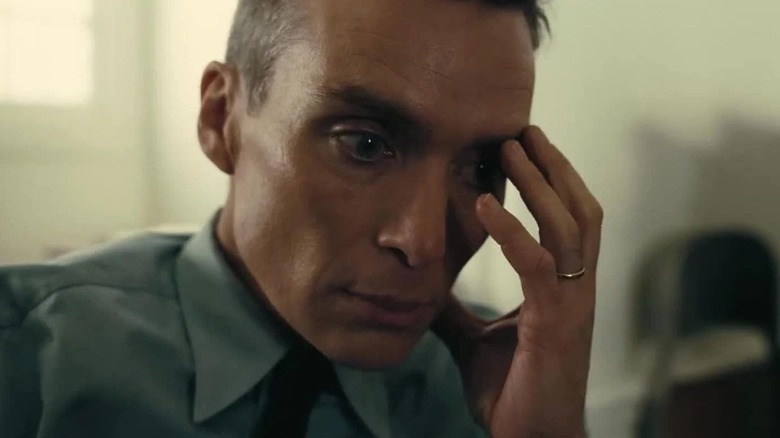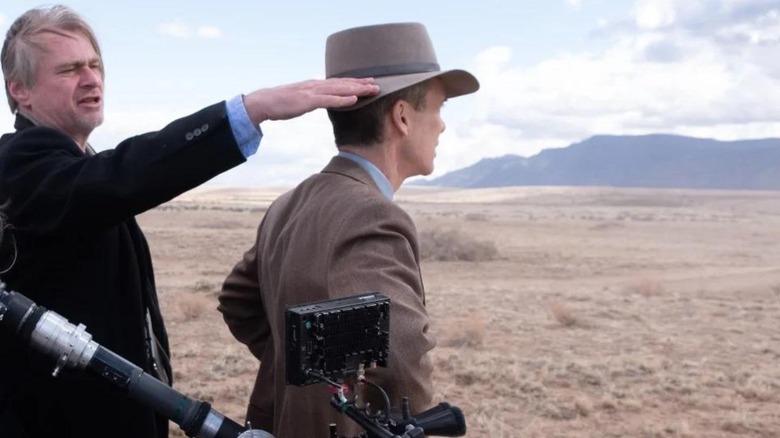Oppenheimer: Christopher Nolan Says Cillian Murphy & Al Pacino Share A Special Skill
Some actors are apparently so subtle in their precision that their performances are invisible to the naked eye. "Oppenheimer" director Christopher Nolan learned this fact on the set of his 2002 film "Insomnia," in which Al Pacino plays a morally embattled Los Angeles homicide detective sent to investigate a murder in the rural town of Nightmute, Alaska, during midnight sun. Pacino's character required the careful execution of a wide range of emotions, oscillating constantly between avoiding accountability for his crimes and trying to bring a killer to justice — two goals in direct conflict with one another — while suffering from severe sleep deprivation.
As Nolan recalled in an interview with the Los Angeles Times, Pacino made acting choices that Nolan couldn't perceive without seeing them on-screen. In response to an adjustment, Pacino had told him, "I've already done that. You can't see it to the eye, but I've done it on the dailies." The five-time Academy Award nominee is averse to using monitors on set and thus had to wait to review the footage at the end of the day (referred to as "dailies").
"I looked for it and I was like, 'Oh, my God,' because there it was," Nolan marveled. "Great film actors can do that, and that's what I had with Cillian [Murphy]." During post-production on "Oppenheimer," the director was stunned by the totality of his longtime collaborator's work, sharing, "The performance became all-enveloping, when I realized Cillian had so much more going on than I saw on set."
Christopher Nolan doesn't use monitors on set
Christopher Nolan avoids having monitors on his sets even though this would help him better see the full effect of his actors' performances. The director believes that they negatively affect staging a scene and prefers instead to compose a scene based on the real geography of the actors and scenery, seemingly feeling that viewing and staging scenes on a screen leads to a two-dimensional translation of the reality they're attempting to capture.
"You have to be able to not look at the shot as a two-dimensional picture, but look at where everything is in three-dimensional space," he explains in a video essay produced by StudioBinder. "I just stay by the camera because I want to see where is the camera, why is the camera where it is, and then place the camera according to my idea of what the point of view is. And I like to try and align the audience quite closely with the point of view of the character."

